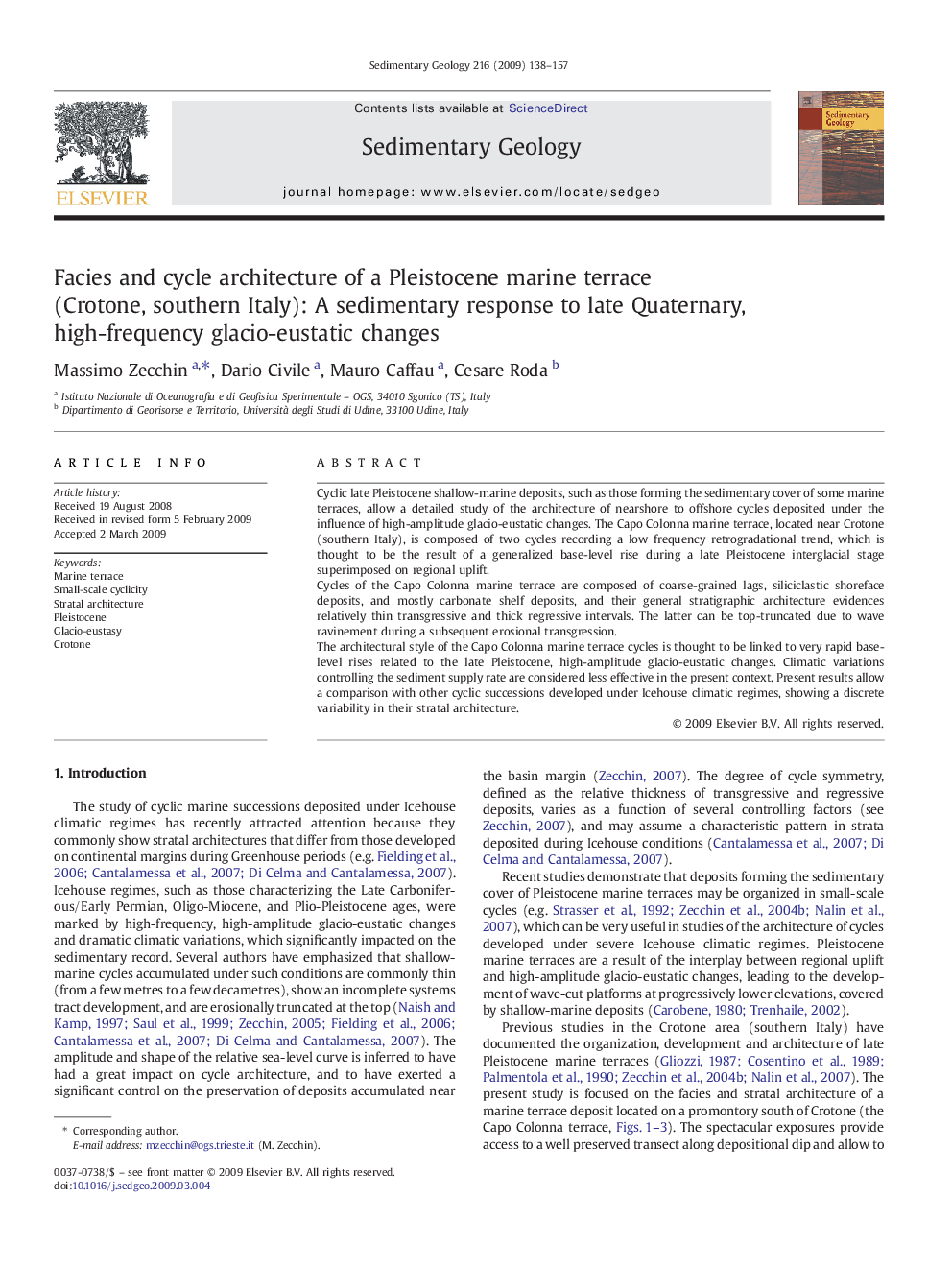| Article ID | Journal | Published Year | Pages | File Type |
|---|---|---|---|---|
| 4690482 | Sedimentary Geology | 2009 | 20 Pages |
Cyclic late Pleistocene shallow-marine deposits, such as those forming the sedimentary cover of some marine terraces, allow a detailed study of the architecture of nearshore to offshore cycles deposited under the influence of high-amplitude glacio-eustatic changes. The Capo Colonna marine terrace, located near Crotone (southern Italy), is composed of two cycles recording a low frequency retrogradational trend, which is thought to be the result of a generalized base-level rise during a late Pleistocene interglacial stage superimposed on regional uplift.Cycles of the Capo Colonna marine terrace are composed of coarse-grained lags, siliciclastic shoreface deposits, and mostly carbonate shelf deposits, and their general stratigraphic architecture evidences relatively thin transgressive and thick regressive intervals. The latter can be top-truncated due to wave ravinement during a subsequent erosional transgression.The architectural style of the Capo Colonna marine terrace cycles is thought to be linked to very rapid base-level rises related to the late Pleistocene, high-amplitude glacio-eustatic changes. Climatic variations controlling the sediment supply rate are considered less effective in the present context. Present results allow a comparison with other cyclic successions developed under Icehouse climatic regimes, showing a discrete variability in their stratal architecture.
